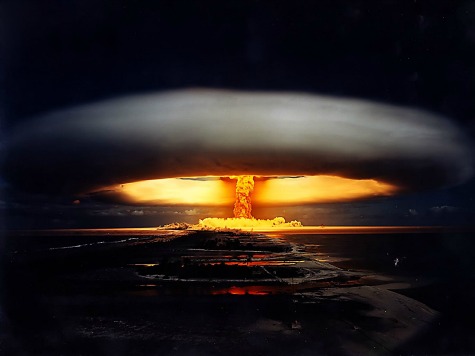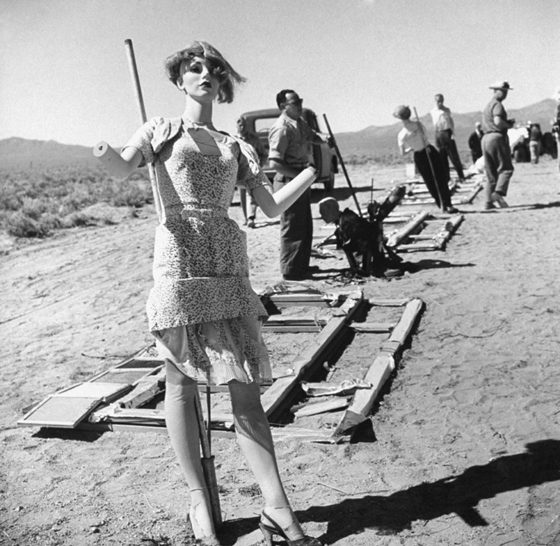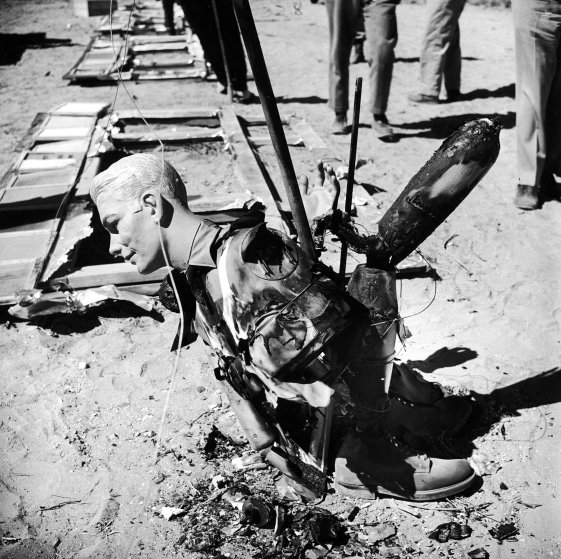The Threat of Nuclear Weapons to America
William J. Astore
Did you know the U.S. has built nearly 70,000 nuclear weapons since 1945? Did you know the U.S. Air Force lost a B-52 and two hydrogen bombs in an accident over North Carolina in 1961, and that one of those H-bombs was a single safety-switch away from exploding with a blast equivalent to three or four million tons of TNT (roughly 200 Hiroshima-type bombs)? Did you know a U.S. nuclear missile exploded in its silo in Arkansas in 1980, throwing its thermonuclear warhead into the countryside?

That last accident is the subject of a PBS American Experience documentary that I watched last night, “Command and Control.” I highly recommend it to all Americans, not just for what it reveals about nuclear accidents and the lack of safety, but for what it reveals about the U.S. military.
Here are a few things I learned about U.S. nuclear weapons and the military from the documentary:
- During the silo accident, the Strategic Air Command (SAC) general in charge of nuclear missiles was a pilot with no experience in missiles. His order to activate a venting fan during a fuel leak led to the explosion that destroyed the missile and killed an airman. (Experts from Martin Marietta, the military contractor that built the Titan II missile, advised against such action.)
- Airmen who courageously tried against long odds to mitigate the accident, and who were wounded in the explosion, were subsequently punished by the Air Force.
- The Air Force refused to provide timely and reliable knowledge to local law enforcement as well as to the Arkansas governor (then Bill Clinton) and senators. Even Vice President Walter Mondale was denied a full and honest accounting of the accident.
- Nuclear safety experts concluded that “luck” played a role in the fact that the Titan’s warhead didn’t explode. It was ejected from the silo without its power source, but if that power source had accompanied the warhead as it flew out of the silo, an explosion equivalent to two or three megatons could conceivably have happened.
- Finally, the number of accidents involving U.S. nuclear weapons is far greater than the military has previously reported. Indeed, even the nation’s foremost expert in nuclear weapons development was not privy to all the data from these accidents.
In short, the U.S. has been very fortunate not to have nuked itself with multiple hydrogen bombs over the last 70 years. Talk today of a threat from North Korea pales in comparison to the threat posed to the U.S. by its own nuclear weapons programs and their hair-raising record of serious accidents and safety violations.
Despite this record, President Obama and now President Trump have asked for nearly a trillion dollars over the next generation to modernize and improve U.S. nuclear forces. Talk about rewarding failure!
Threatening genocidal murder is what passes for “deterrence,” then and now. This madness will continue as long as people acquiesce to the idea the government knows best and can be trusted with nuclear weapons that can destroy vast areas of our own country, along with most of the world.
To end the insanity, we must commit to eliminating nuclear weapons. Ronald Reagan saw the wisdom of total nuclear disarmament. So should we all.
An Addendum: In my Air Force career, I knew many missileers who worked in silos. They were dedicated professionals. But accidents happen, and complex weapons systems fail often in complex and unpredictable ways. Again, it’s nuclear experts themselves who say that luck has played a significant role in the fact that America hasn’t yet nuked itself. (Of course, we performed a lot of above-ground nuclear testing in places like Nevada, making them “no-go” places to this day due to radiation.)
Update (4/27/17): I’d heard of Air Force plans to base nuclear weapons on the moon, but today I learned that a nuclear test was contemplated on or near the moon as a way of showcasing American might during the Cold War. As the New York Times reported, “Dr. [Leonard] Reiffel revealed that the Air Force had been interested in staging a surprise lunar explosion, and that its goal was propaganda. ‘The foremost intent was to impress the world with the prowess of the United States.’ It was a P.R. device, without question, in the minds of the people from the Air Force.” Dr. Reiffel further noted that, “The cost to science of destroying the pristine lunar environment did not seem of concern to our sponsors [the U.S. military] – but it certainly was to us, as I made clear at the time.”
The U.S. military wasn’t just content to pollute the earth with nuclear radiation: they wanted to pollute space and the moon as well. All in the name of “deterrence.”
Two pictures of above-ground nuclear testing in Nevada in 1955

Reprinted from Bracing Views
https://bracingviews.com/2017/04/26/the-threat-of-nuclear-weapons-to-america/


0 Comments:
Post a Comment
Subscribe to Post Comments [Atom]
<< Home